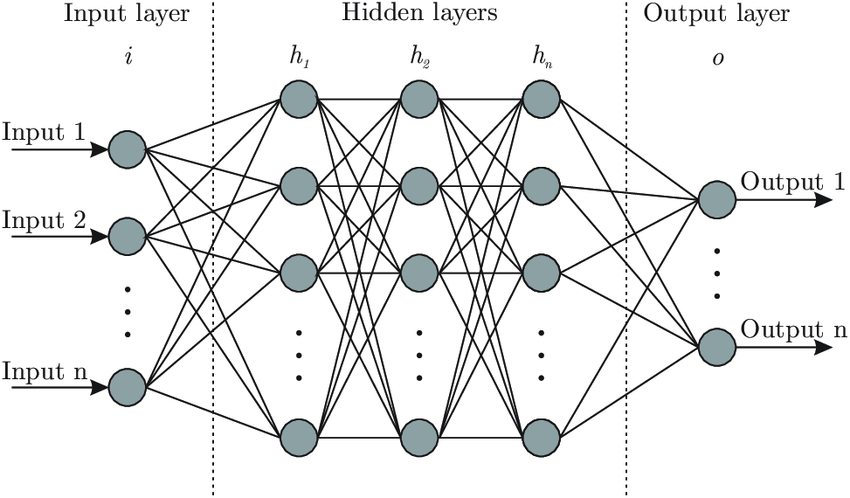Artificial neural network

Artificial neural networks (ANN) or connectionist systems are computing systems vaguely inspired by the biological neural networks that constitute animal brains.
The data structures and functionality of neural nets are designed to simulate associative memory. Neural nets learn by processing examples, each of which contains a known "input" and "result," forming probability-weighted associations between the two, which are stored within the data structure of the net itself. (The "input" here is more accurately called an input set, since it generally consists of multiple independent variables, rather than a single value.) Thus, the "learning" of a neural net from a given example is the difference in the state of the net before and after processing the example. After being given a sufficient number of examples, the net becomes capable of predicting results from inputs, using the associations built from the example set. If a feedback loop is provided to the neural net about the accuracy of its predictions, it continues to refine its associations, resulting in an ever-increasing level of accuracy. In short, there is a direct relationship between the number and diversity of examples processed by a neural net and the accuracy of its predictions. This is why a neural net gets "better" with use. What is interesting about neural nets is that because they are indiscriminate in the way they form associations, they can form unexpected associations, and reveal relationships and dependencies that were not previously known.
Such systems "learn" to perform tasks by considering examples, generally without being programmed with task-specific rules. For example, in image recognition, they might learn to identify images that contain cats by analyzing example images that have been manually labeled as "cat" or "no cat" and using the results to identify cats in other images. They do this without any prior knowledge of cats, for example that they have fur, tails, whiskers and cat-like faces. Instead, they automatically generate identifying characteristics from the examples that they process.
An ANN is based on a collection of connected units or nodes called artificial neurons, which loosely model the neurons in a biological brain. Each connection, like the synapses in a biological brain, can transmit a signal to other neurons. An artificial neuron that receives a signal then processes it and can signal neurons connected to it.
In ANN implementations, the "signal" at a connection is a real number, and the output of each neuron is computed by some non-linear function of the sum of its inputs. The connections are called edges. Neurons and edges typically have a weight that adjusts as learning proceeds. The weight increases or decreases the strength of the signal at a connection. Neurons may have a threshold such that a signal is sent only if the aggregate signal crosses that threshold. Typically, neurons are aggregated into layers. Different layers may perform different transformations on their inputs. Signals travel from the first layer (the input layer), to the last layer (the output layer), possibly after traversing the layers multiple times.
The original goal of the ANN approach was to solve problems in the same way that a human brain would. But over time, attention moved to performing specific tasks, leading to deviations from biology. ANNs have been used on a variety of tasks, including computer vision, speech recognition, machine translation, social network filtering, playing board and video games, medical diagnosis, and even in activities that have traditionally been considered as reserved to humans, like painting.

Comments
Post a Comment